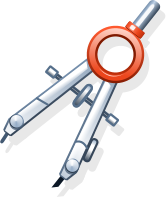Have you ever really thought about what is holding you back from taking your guitar playing to the next level?
What’s Holding You Back?
A powerful technique you can use is identifying limiting factors in your playing. A limiting factor is something that acts as a bottleneck, limiting your results on the guitar. Successfully identifying the limiting factors in your guitar playing, focusing on them and correcting them, will often lead to the fastest and largest improvements in your guitar playing.
There are many different levels of your playing that you can look at for limiting factors. Today we will look how to identify a limiting factor that a beginner or intermediate player may have with learning a new chord.
Determine Your Limiting Factor
When you have difficulty playing a chord, you will usually find that there will be one factor that creates a bottleneck in your progress. If you are having difficulty playing or memorizing a chord, you should determine what the limiting factor is and then focus on eliminating it.
Look at all aspects of playing the chord in question and determine what single factor, if you were to master it, would allow you to easily and correctly play the chord every time?
First you must determine whether it is a physical or mental factor that is causing the difficulty. Take out a piece of paper and without looking at the actual chord diagram or the neck of the guitar, make your own drawing of the chord you are having difficulty with. Include any open strings or muted/omitted strings and indicate the fret-hand fingers that are to be used. Can you draw the chord correctly? If you can’t, then the limiting factor is mental. You simply are not clear as to where your fingers need to go on the fretboard. This means you should devote some time to drawing fretboard diagrams of this chord until you have the chord diagram memorized.
If you have no problem drawing the chord with correct finger indications, then the limiting factor must be physical. The first thing to consider is whether you are picking the correct strings required for the chord. If you discover that you are having difficulty with the pick-hand then you know what you will need to focus on.
Finally we have the fret-hand. If there is problem with fingering the chord you now know that this areas needs some attention. You will need to dig down and see specifically where the problem is. Once you’ve successfully identified the trouble spot you can work on fixing it.
Can you see how powerful this is and how this can save you so much time? Instead of repeating your mistakes over and over, you identify the problem and focus on fixing it.
The other thing to keep in mind when you don’t correctly identify trouble spots is that when you keep making the same mistake over and over, by repeating the mistake you are actually teaching yourself to make the mistake.
If you keep making the same mistake over and over again…you are actually teaching yourself to make that mistake!
If you learn something wrong and you keep playing it wrong, then all you are doing is reinforcing this. You are teaching yourself to play wrong. Fortunately, you now you know how to avoid this!





